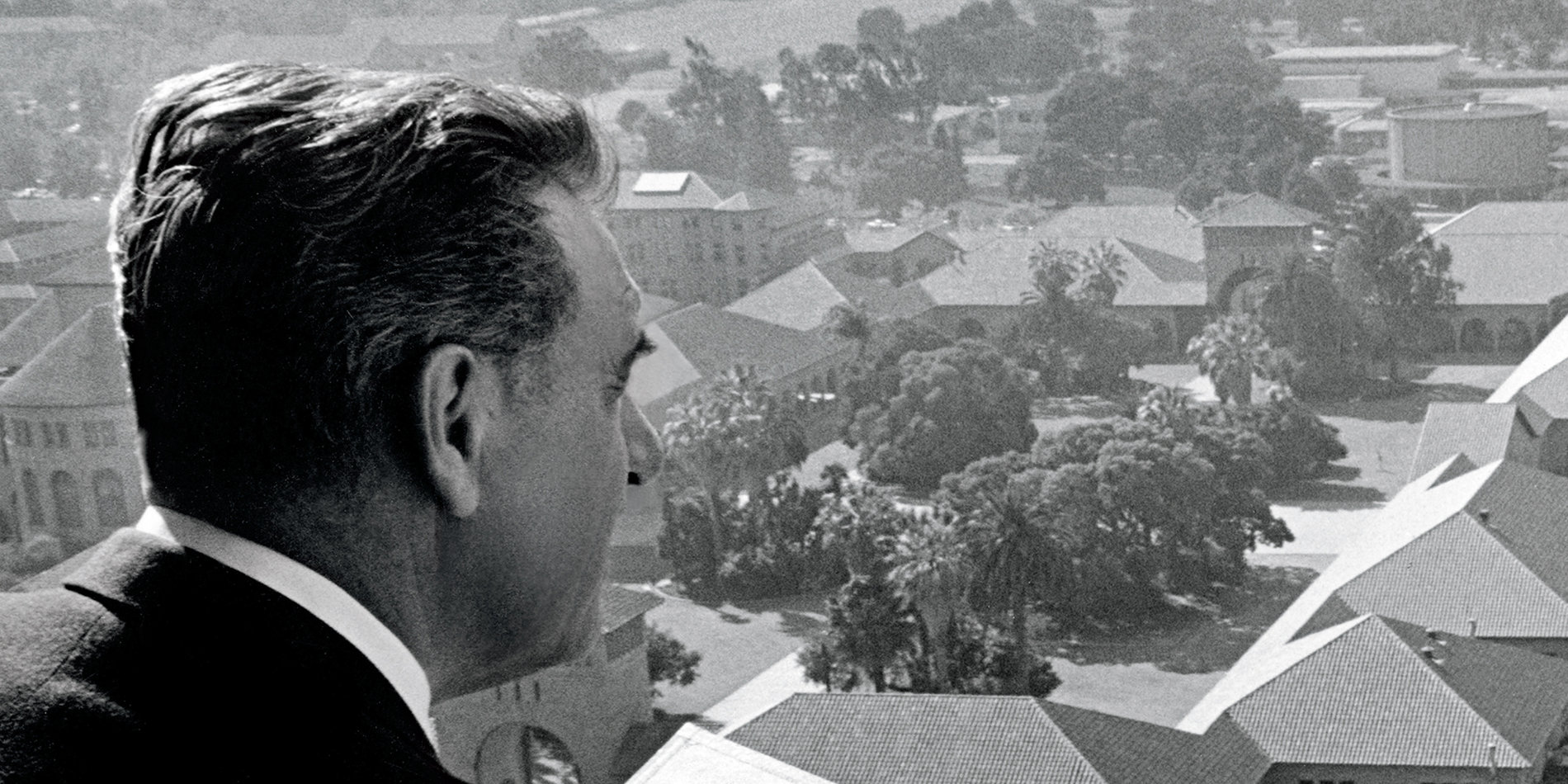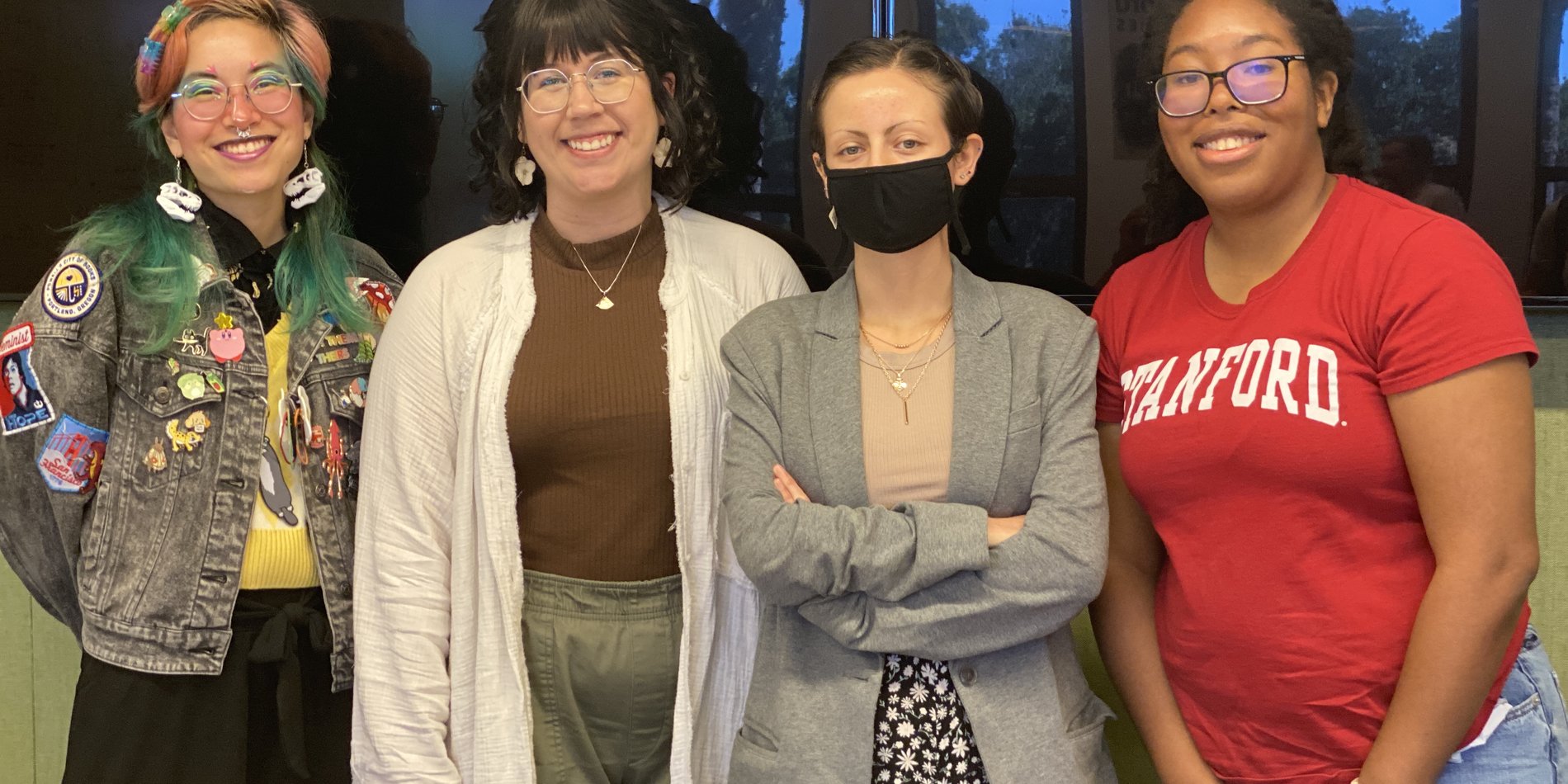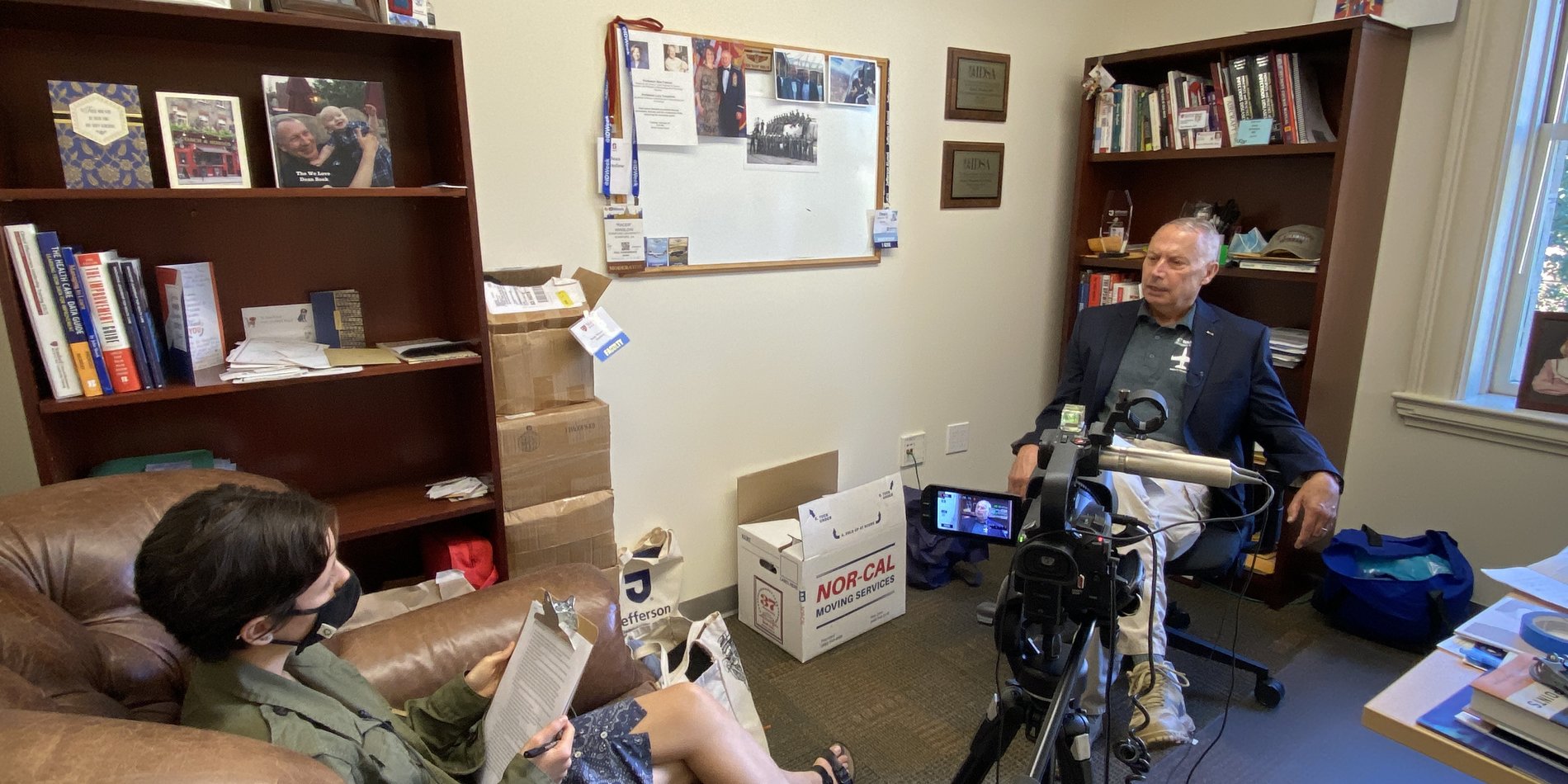Guest Blogger: Summer Intern Sol Martinez

Intern Sol Martinez.
I am excited to share that the John J. Johnson papers are now available for research through the University Archives. John J. Johnson (1912-2004) served as a professor of Latin American history at Stanford from 1946 to 1977, and continued to contribute to the field through research publications, journal editorship, teaching, and mentorship long after his retirement. This collection represents the latter part of Johnson’s career. Spanning from 1979 to 2001, the Johnson papers include correspondence, lectures, and research and drafts for his texts Latin America in Caricature (1980), A Hemisphere Apart: The Foundations of United States Policy toward Latin America (1990), and Foreign Images of the U.S.: 1860-1992: A Cartoon History (unpublished).
Working as an intern in the University Archives this summer, I was given the opportunity to process the Johnson papers under the supervision of Assistant University Archivist Hanna Ahn. We began the ten-week project with eight large cardboard boxes stuffed with papers, binders, and personal belongings that had once been used in Professor Johnson’s office in the History Department. We even found a wooden pipe tucked into one of the boxes! Though this discovery made us laugh, it also highlighted an aspect of archival work that I’ve come to value deeply: the ability to feel physically connected to the past and its people.

Materials from the John J. Johnson Papers.
While the collection of unorganized boxes and their hundreds of files seemed daunting at first, I learned that it’s an archivist’s job to dive right in. After a preliminary inventory of the boxes’ contents, I was able to identify broad categories in which to begin to sort Professor Johnson’s materials. Admittedly, I was somewhat surprised to realize that a good deal of research goes into this step of the process. I frequently found myself referring to biographies of Johnson, his published works, and even language and historical resources in order to determine how various files should be organized.
Perhaps the greatest discovery made in this collection was that of Johnson’s unpublished manuscript titled Foreign Images of the U.S.: 1860-1992: A Cartoon History. While the text had been shared with colleagues before Johnson’s passing, it has not been made publicly available until now. This work, an examination of political cartoons about the United States from external perspectives, and its materials have become my favorite component of the collection for the insight they provide into the depth of Professor Johnson’s research and writing process. In fact, two of the collection’s five containers are dedicated to the text, one of which is filled entirely with hundreds of political cartoons that were not ultimately included in the manuscript. These cartoons’ publication dates span from 1812 to 1999 and address a wide variety of domestic and foreign issues. Many include much of their original publication information, providing an excellent resource for potential researchers to build on Johnson’s work with analysis of their own.

Intern Sol Martinez processing the John J. Johnson Papers.
I am also grateful for the opportunity Foreign Images of the U.S. opened for me to connect with a former student and longtime friend of Johnson’s, Professor Paul Drake. I reached out to Professor Drake regarding the manuscript, who shared with me that he had worked to have the text published but had ultimately faced challenges in doing so since Professor Johnson had already passed. Professor Drake also graciously recounted some of Johnson’s quips, confirming, as I had gathered from working with his personal materials, Johnson’s humorous and charming approach to life and academia.
In addition to its thorough documentation of Johnson’s unpublished manuscript and other academic projects, the collection provides valuable insight into the state of his field in the late 20th century. Many materials in the collection’s “Correspondence and Professional Memberships” series depict the conversations being held in Latin American studies and among Stanford’s faculty during the 1980s and 90s. In particular, Carton 1’s Folder 6, entitled “Correspondence and Files re: Papers on Women in Latin America 1983,” highlights feedback Johnson provided during his tenure as the managing editor of the Hispanic American Historical Review, reflecting his ongoing support of women in the field throughout his career.
I cannot express greatly enough my gratitude to Hanna Ahn, Emma Frothingham, and Presley Hubschmitt for their guidance and encouragement throughout this summer. Many thanks also to Natalie Marine-Street and Josh Schneider for their support, as well as to the Stanford Historical Society and the Centers for Equity Community and Leadership, whose funding made this internship program possible.

Intern Sol Martinez (left) and Assistant University Archivist Hanna Ahn.
About John J. Johnson
John J. Johnson (1912-2004) was a pioneering historian and mentor in the field of Latin American studies whose career at Stanford spanned several decades. Johnson grew up in White Swan, Washington on the Yakama Indian Reservation and was the first member of his family to attend college, graduating from Central Washington College of Education in 1940. After receiving his MA and PhD from the University of California, Berkeley, Johnson arrived at Stanford where he served as a professor of history from 1946 to 1977.
At the time of his entrance into the field, Latin American studies engaged few scholars and produced historical textbooks which Johnson regarded as "ethnocentric," "weak on analysis," and "distort[ing] history." Johnson would ultimately contribute significant political, historical, and interdisciplinary analysis to the base of Latin American scholarship through a number of texts, particularly his seminal work Political Change in Latin America: The Emergence of the Middle Sectors (1958). He also played a key role in the development of Stanford's Center for Latin American Studies, serving as its first longterm director from 1966 to 1972.
Following his retirement from Stanford, Johnson spent five years as the managing editor of the Hispanic American Historical Review. He published Latin America in Caricature in 1980, which featured early academic analysis of the racial, gendered, and social implications of political cartoons created about Latin America by foreign artists. In 1990, Johnson published A Hemisphere Apart: The Foundations of United States Policy toward Latin America, which examined the period of American foreign policy between 1815 and 1830 as a basis for its future iterations. Finally, Johnson worked for several years on a manuscript entitled Foreign Images of the U.S.: 1860-1992: A Cartoon History, which explored external depictions of the United States in political cartoons and was not yet published by the time of his passing in 2004.
Sol Martinez is a senior at Stanford University majoring in American Studies.


